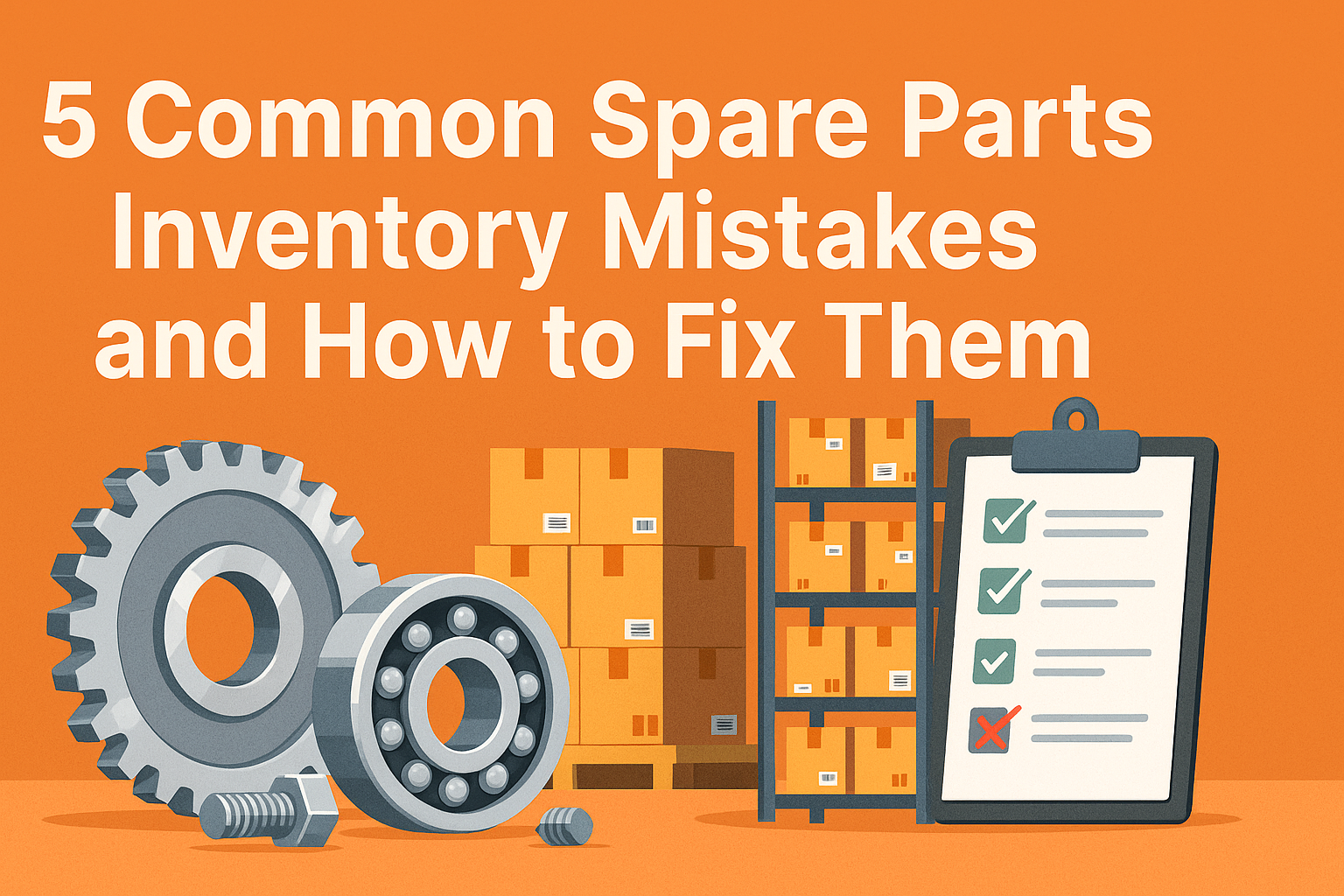No Item in Cart
5 Common Spare Parts Inventory Mistakes and How to Fix Them
Introduction
Managing spare parts inventory might seem simple — until small mistakes snowball into downtime, wasted money, and frustrated teams. Many factories fall into the same traps, but the good news is they’re avoidable.
In this post, we highlight 5 of the most common spare parts inventory mistakes and explain how HUB’s smart tools help you avoid them.
❌ Mistake 1: Ignoring Shelf Life
Some parts (e.g., lubricants, seals, filters) degrade over time. Holding them too long can lead to failures or compliance issues.
✅ HUB Solution:
HUB tracks expiration dates and flags parts nearing expiry for priority use or replacement.
❌ Mistake 2: Poor Labeling and Identification
Unclear or missing labels lead to part mix-ups, delays, and errors during maintenance.
✅ HUB Solution:
HUB links every part to a unique barcode/QR code, with digital records and images for easy identification.
❌ Mistake 3: Inaccurate Inventory Data
Stock counts often drift over time, especially with manual systems, causing stockouts or overstocking.
✅ HUB Solution:
Live dashboards and automated cycle count scheduling keep your inventory data fresh and reliable.
❌ Mistake 4: Not Tracking Slow-Moving or Obsolete Parts
Holding on to dead stock consumes space and capital.
✅ HUB Solution:
HUB flags stagnant parts and suggests resale, exchange, or disposal options through its marketplace.
❌ Mistake 5: Lack of Multi-Site Visibility
Different plants may hoard parts others need, but without shared visibility, collaboration fails.
✅ HUB Solution:
HUB provides a cross-location inventory view so teams can borrow, share, or transfer spares efficiently.
✅ Conclusion
Small mistakes in spare parts inventory can have big consequences. With HUB, you get the tools to keep your stock organized, optimized, and always ready to support your operations.
🔗 Start a Free Trial of HUB: www.HUBspareparts.com
🔗 Book a Demo to Fix Inventory Gaps: WhatsApp Chat














